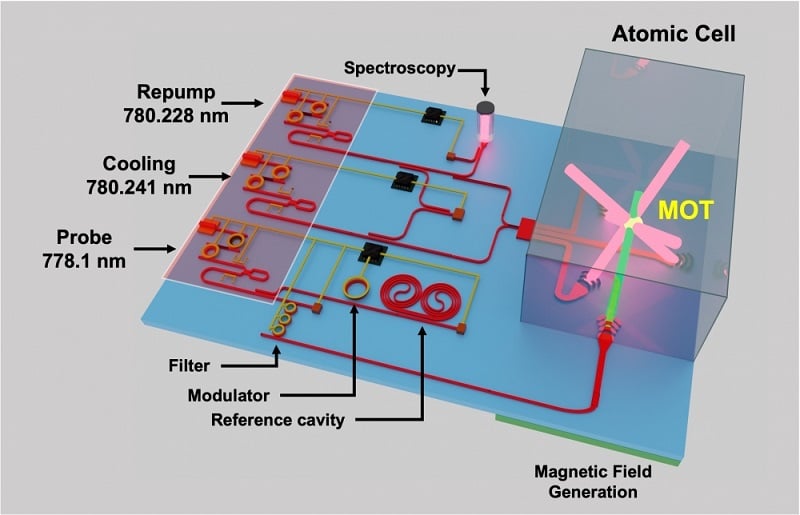A NASA-funded collaboration will focus on advancing quantum sensing technology to enable new understanding of Earth and the effects of climate change. Led by the University of Texas at Austin (UT), Quantum Pathways Institute collaborators are working to develop sensors that could help satellites in orbit collect data about how atoms react to small changes in their environment.
This information could then be used to infer the time variations in Earth’s gravity field.
As part of the effort, researchers will develop photonic integrated circuits (PICs) to help monitor Earth’s environment from space.

The Perito Moreno Glacier in Argentina as seen from the International Space Station on Feb. 21, 2012. NASA’s Quantum Pathways Institute led by the University of Texas at Austin will specialize in advancing quantum sensing technology to help scientists understand the movement of ice and water on Earth’s surface. Courtesy of NASA.
“There have been tremendous advances in quantum methods recently, mostly in the context of computing,” said Srinivas Bettadpur, leader of the new project and professor in the Department of Aerospace Engineering and Engineering Mechanics at UT. Under the Quantum Pathways Institute, he said, the collaborators will deploy quantum sensing technology in space so as to observe the entirety of the planet.
The information that the collaboration seeks to obtain will enable scientists to improve how accurately several important climate processes, such as sea level rise, ice melt rates, changes in land-water resources, and ocean heat storage changes, can be measured.
The multi-university team includes researchers from the University of Colorado Boulder, the University of Santa Barbara (UCSB), Caltech, and the National Institute of Standards and Technology.

An example of an atomic-photonic integrated chip for cold atoms. Courtesy of Andrei Isichenko/UCSB.
Though aspects of these sensing technologies exist currently, there are other parts for which the collaborators must build new. “In order to do this, we have to take the lasers and photonics and modulators and control electronics that make up 90% of the atom experiments here on Earth, and work really hard to get all that precision onto small, low-power chips that can be deployed in space,” said Daniel Blumenthal, professor of electrical and computer engineering at UCSB.
Blumenthal will work with Seth Bank and Dan Wasserman of UT to develop the PICs for chips that will be used to measure small variations in Earth’s gravity from space.
Among the technologies that Blumenthal is helping move to the chip scale is a shaken lattice interferometer structure — an atomic interferometer sensor that optically cools and traps atoms to measure gravity gradients with extremely high sensitivity. Institute efforts will build on pursuits using the optical lattice clock technology using ultracold atoms from JILA (formerly the Joint Institute for Laboratory Astrophysics) at the University of Colorado. For Institute purposes, said JILA fellow Murray Holland, this technology will be applied to extreme inertial sensing capabilities rather than time-keeping.
Beyond gravity sensing to address Earth’s climate issues, Blumenthal said, the exquisitely sensitive space-based gravitational measurement technology could eventually be deployed for other, Earth-based applications, as well as for purposes of future space exploration.
“It could be on the Space Station, or geostationary satellites,” he said. “Or they could be sent to Jupiter or Venus or Mars to map out the gravity of those planets.”
The institute will receive up to $15 million in funding over the next five years.